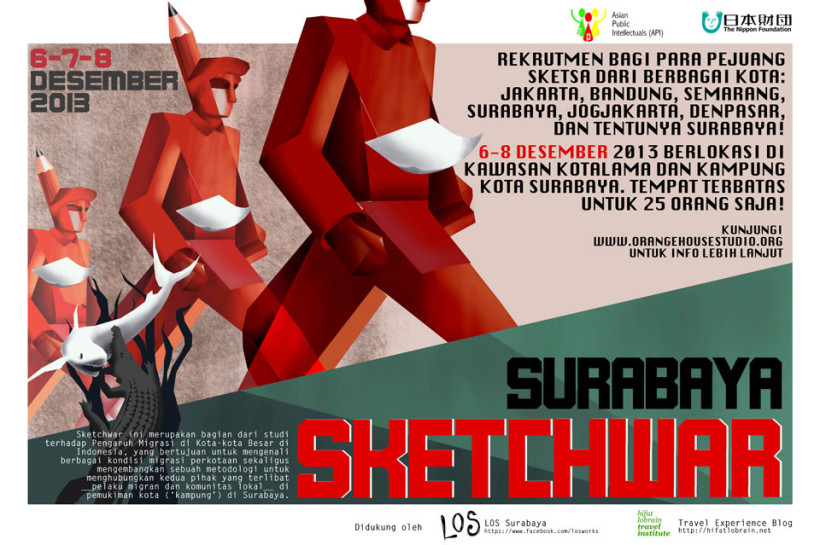
The history of Surabaya as one of the oldest cities in Indonesia is also the history of human migration for hundreds of years. As a port and trading city, Surabaya has attracted settlers from Hadramaut (Yemen) and Campa since the 15th century. The sweet success of the sugar business in the early 20th century has attracted many immigrants from the surrounding areas, making Surabaya as the largest city in the Netherlands East Indies at the time, even bigger than Jakarta. Living in the slums of the center to the suburbs, the residents of this region played an important role in the event of November 1945 : the village became an untouchable bastion of the Allies. Migration didn't stop after the Independence: failing to find jobs in their hometowns, rural residents flocked to claim the suburb of Surabaya, creating new residential areas. In spite of some effort to organize this region, the New Order regime were not able to solve the root of the problem : unfair distribution of wealth between the urban and rural .
Surabaya Sketchwar is trying to record the traces of human migrations in Surabaya, both within the built environment, as well as in human activities. The results of this sketchwar will be published in a book to be published in collaboration with The Nippon Foundation on the topic of migration in Surabaya. The organizers will also hold exhibition of this sketch on December 15, 2013, in Balai Pemuda, in conjunction with Ayorek! SUBfestive.
The organiser provides no financial compensation for participants, but participants will each be given a book.
Locations
Kampung Tunjungan
Kampung Tunjungan is located in the middle of the congested commercial business district area of Surabaya. The complex is one of the oldest kampung and has successfully passed a series of regimes from the kepatihan era, colonial, post-independence, until the current era of capitalism. This village still survives amid rampant commercial industry that is encroaching the outside of this massive kampung complex.
Jl. Ratna
Jl. Ratna is a unique village along one allye. This village was originally surrounded by industrial areas, but now the area has been turned into shopping centers, hotels, and apartments. Because of its strategic location, jl. Ratna is currently an ideal haven for immigrants, and we can find many boarding houses with distinctive designs to accommodate the newcomers in a limited space.
MISA -Massive Influx Study Activity-
A Study of Impact of Urban Migration for Major Cities in Indonesia
The main objective of this activity is to study the process and the influence of the phenomenon of urbanization in the city of Surabaya, and then to develop a methodology for connecting the overlapping migrants and natives. Most often found where both coexist within the village. We work collaboratively with communities and individuals from different backgrounds to receive feedback and opinions on the current condition of the city of Surabaya. The results of this study will be presented to the public, in an effort to find a decent lifestyle for cities in Asia.
Project Collaborators
Kenta Kishi, Ichsan Harja, Mohammad Cahyo, Junko Sato, Bintang Putra and Daiki Nakagawa.
Grant
Collaborative Grants 2013, API Fellowship Program of The Nippon Foundation
Contact Us
+62 856 310 7662
Rungkut Asri Timur VII, no. 8
60293, Surabaya
Indonesia
EVENT SNAPSHOT
Event Category
Arts & CultureRSVP
Not RequiredENTRANCE
FreeWhen
Date: 06 Dec 2013 to 08 Dec 2013Address
Rungkut Asri Timur VII, no. 8 , Surabaya , Jawa Timur , Indonesia , 60293Contact Information
Orange House Studio+62 856 310 7662



